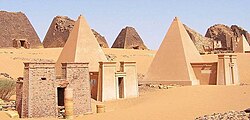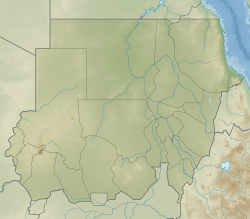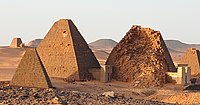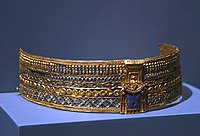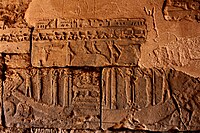Pyramids_of_Meroë
Pyramids of Meroë
Pyramids in Sudan
The Pyramids of Meroë are a large number of Nubian pyramids, encompassing three cemeteries near the ancient city of Meroë. The Meroë pyramids date to the later stage of the Kingdom of Kush (3rd century BCE–4th century CE) and were burial places for Kushite monarchs, other members of the royal family, and important officials and dignitaries.
You can help expand this article with text translated from the corresponding article in German. Click [show] for important translation instructions.
|
The three cemeteries collectively encompass over a thousand graves, out of which at least 147 were pyramids. The majority of the pyramids (at least 82) are from the southern cemetery and were not burials of royals.
On 8 September 2020, the pyramids were threatened for the first time by floods.
